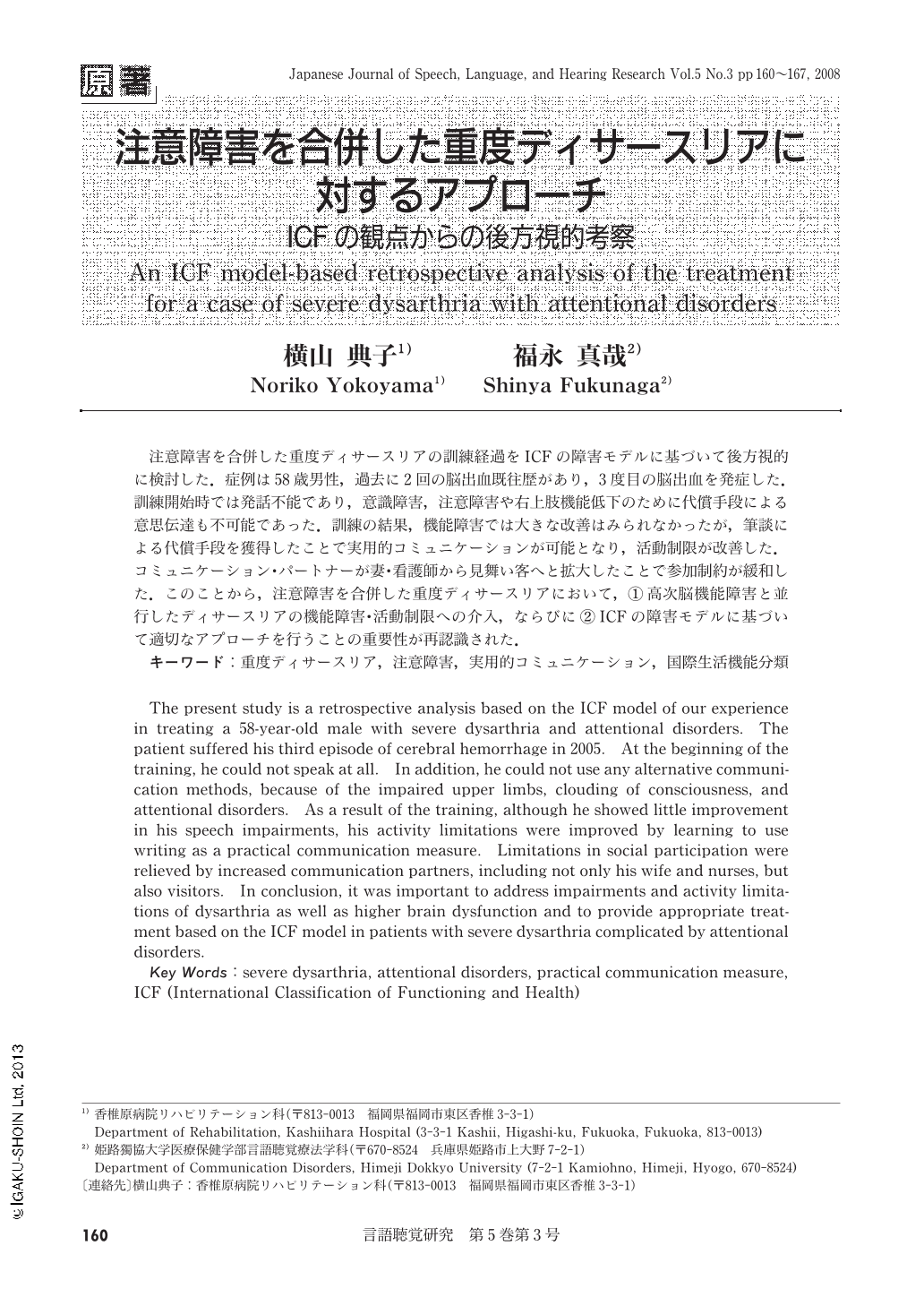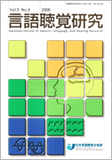Japanese
English
- 有料閲覧
- Abstract 文献概要
- 1ページ目 Look Inside
- 参考文献 Reference
注意障害を合併した重度ディサースリアの訓練経過をICFの障害モデルに基づいて後方視的に検討した.症例は58歳男性,過去に2回の脳出血既往歴があり,3度目の脳出血を発症した.訓練開始時では発話不能であり,意識障害,注意障害や右上肢機能低下のために代償手段による意思伝達も不可能であった.訓練の結果,機能障害では大きな改善はみられなかったが,筆談による代償手段を獲得したことで実用的コミュニケーションが可能となり,活動制限が改善した.コミュニケーション・パートナーが妻・看護師から見舞い客へと拡大したことで参加制約が緩和した.このことから,注意障害を合併した重度ディサースリアにおいて,①高次脳機能障害と並行したディサースリアの機能障害・活動制限への介入,ならびに②ICFの障害モデルに基づいて適切なアプローチを行うことの重要性が再認識された.
The present study is a retrospective analysis based on the ICF model of our experience in treating a 58-year-old male with severe dysarthria and attentional disorders. The patient suffered his third episode of cerebral hemorrhage in 2005. At the beginning of the training, he could not speak at all. In addition, he could not use any alternative communication methods, because of the impaired upper limbs, clouding of consciousness, and attentional disorders. As a result of the training, although he showed little improvement in his speech impairments, his activity limitations were improved by learning to use writing as a practical communication measure. Limitations in social participation were relieved by increased communication partners, including not only his wife and nurses, but also visitors. In conclusion, it was important to address impairments and activity limitations of dysarthria as well as higher brain dysfunction and to provide appropriate treatment based on the ICF model in patients with severe dysarthria complicated by attentional disorders.

Copyright © 2008, Japanese Association of Speech-Language-Hearing Therapists. All rights reserved.


